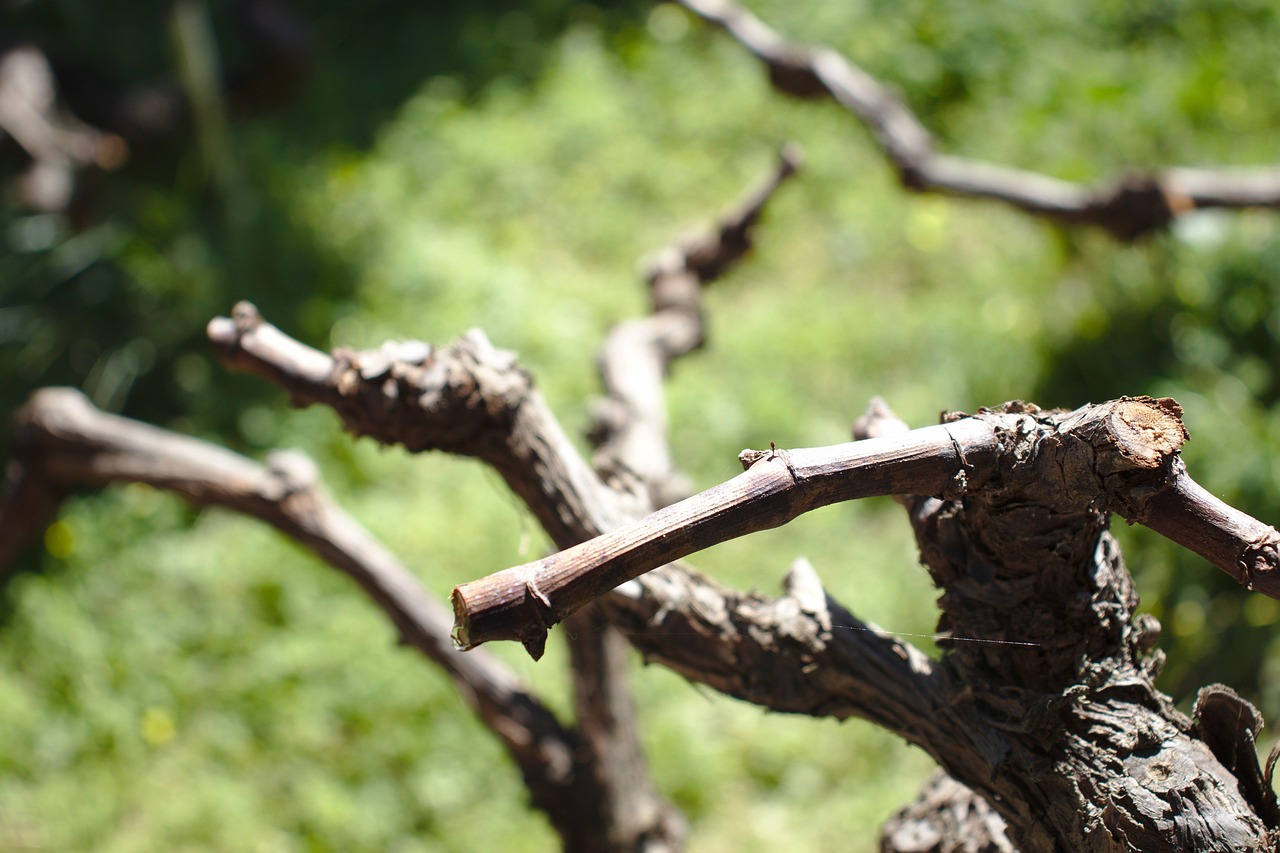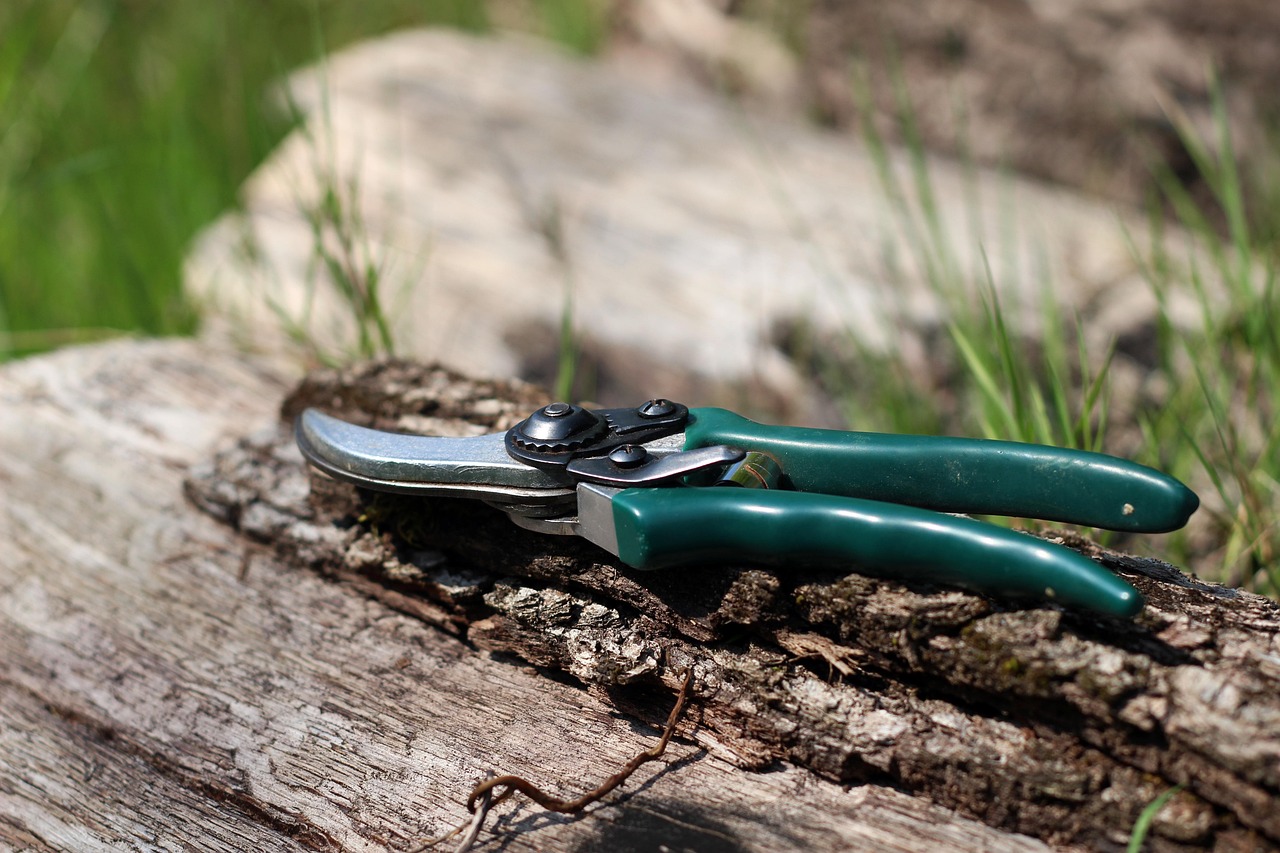Pruning is a crucial practice in vineyard management that enhances vine health, improves grape quality, and increases yield. Proper techniques can lead to better airflow and sunlight exposure, ultimately resulting in superior wine production.
Understanding the importance of pruning in vineyards is essential for any grape grower. Pruning helps shape the vine for optimal growth, removes dead or diseased wood, and controls the number of grape clusters. This management technique not only promotes better fruit quality but also reduces the risk of pests and diseases.

Vines are perennial plants that require yearly attention. Each season, growers must assess the vine’s structure and health to make informed pruning decisions. The timing and method of pruning can greatly influence the vineyard’s productivity. Generally, pruning takes place in late winter or early spring before new growth begins.
The Importance of Pruning
Pruning serves several critical functions in vineyard management. Here are some key reasons why it is essential:
- Improves Air Circulation: Pruned vines allow better airflow, which helps prevent fungal diseases.
- Enhances Sunlight Exposure: Proper pruning ensures that leaves and grapes receive sufficient sunlight, leading to better photosynthesis.
- Increases Yields: By managing the number of buds, growers can control the crop load and improve grape quality.
- Shapes the Vineyard: Pruning helps maintain vine structure, making it easier to manage and harvest.
- Promotes Healthy Growth: Removing old or diseased wood encourages new growth and rejuvenates the vine.
In addition to these benefits, pruning allows for better management of vine diseases. By removing affected parts, growers can minimize the spread of pathogens and maintain overall vineyard health.

There are two primary types of pruning: cane pruning and spur pruning. Each method offers different advantages depending on the vineyard’s goals and grape varieties. Understanding these methods is essential for effective vineyard management.
Cane Pruning vs. Spur Pruning
Cane pruning involves cutting back last year’s growth to a few selected canes, which will produce this year’s crop. This method is suitable for varieties that need fewer buds for optimal fruiting. On the other hand, spur pruning shortens last year’s growth down to spurs with two to three buds each. This technique works well for vigorous varieties that can support more fruit.
| Pruning Type | Description | Best For |
|---|---|---|
| Cane Pruning | Cutting back to a few canes from last year’s growth | Varieties needing fewer buds |
| Spur Pruning | Shortening last year’s growth to spurs with 2-3 buds | Vigorous varieties with higher yields |
The timing of pruning is equally important. Pruning too early can expose vines to frost damage, while pruning too late may hinder growth. Growers should monitor weather conditions closely and consult local agricultural resources for optimal timing based on regional climates.

Tools for Pruning
The right tools make all the difference in successful pruning. Here are some essential tools every vineyard manager should have:
- Pruning Shears: Sharp, bypass shears are ideal for clean cuts on young vines.
- Loppers: For thicker branches, loppers provide extra leverage and cutting power.
- Saws: Hand saws or pole saws are necessary for larger limbs that need removal.
- Gloves: Durable gloves protect hands from cuts and thorns during pruning.
Using high-quality tools reduces the risk of damaging the vine and promotes faster healing. Maintenance of these tools is crucial; regular sharpening ensures clean cuts that minimize stress on the plant.
Once the pruning season is complete, monitoring the vines’ response is vital. Observing new growth in spring will indicate whether the pruning was successful. Proper care following pruning will ensure the vineyard thrives throughout the growing season.

In summary, mastering pruning techniques is essential for anyone involved in vineyard management. Understanding when and how to prune can lead to healthier vines and a more fruitful harvest.
Understanding the Pruning Process
The pruning process involves several steps that require careful planning and execution. Each step is crucial to achieving the desired results for vine health and grape quality. Understanding these steps can significantly improve vineyard management practices.
Assessing the Vineyard
Before pruning begins, it is essential to assess the vineyard. This assessment helps identify which vines need attention and determines the best approach. Key factors to consider include:
- Vine Health: Look for signs of disease or damage.
- Growth Patterns: Observe how each vine has grown over the past season.
- Bud Development: Note the placement and condition of buds for effective pruning.
Documenting these observations can help in making informed decisions during pruning. Additionally, this assessment can guide future management strategies for the vineyard.
Choosing the Right Time for Pruning
The timing of pruning is a critical factor affecting the outcome. Generally, pruning should occur during late winter or early spring when the vines are still dormant. However, specific timing can vary based on regional climates and grape varieties. Here are some considerations:
- Frost Risk: Avoid pruning during periods of potential frost to protect the vines.
- Varietal Differences: Understand when different grape varieties typically break dormancy.
- Weather Conditions: Favor dry, mild days for pruning to minimize stress on the vines.
By taking these factors into account, vineyard managers can optimize their pruning schedule to promote healthy vine growth.
Pruning Techniques
Different pruning techniques can be applied based on the vineyard’s goals and grape varieties. Familiarizing oneself with various methods will enhance overall vineyard management.
Cane Pruning Techniques
Cane pruning involves selecting one or two healthy canes from last year’s growth to leave for the current season. This technique is beneficial for certain grape varieties that produce better yields with fewer buds. Here are steps involved in cane pruning:
- Select Healthy Canes: Choose canes that are strong, have good spacing, and are free from disease.
- Cut Back Excess Growth: Remove any additional canes, leaving only the selected ones.
- Make Clean Cuts: Use sharp shears to ensure clean cuts, minimizing damage to the vine.
This method allows for better fruit quality and improved airflow around the grape clusters.
Spur Pruning Techniques
Spur pruning is another common technique where last year’s growth is cut back to short spurs with two to three buds each. This approach is ideal for vigorous grape varieties. The steps include:
- Identify Strong Spurs: Select spurs that are well-positioned and healthy.
- Trim Back Weak Growth: Remove any weak or poorly positioned spurs.
- Maintain Proper Spacing: Ensure that spurs are evenly spaced along the vine for optimal growth.
Spur pruning helps maintain vine vigor and supports higher yields while also allowing for better management of canopy density.
Pest and Disease Management During Pruning
Pest and disease management is vital during the pruning process. Proper techniques and timely actions can prevent problems from escalating. Here are some strategies to consider:
- Sanitize Tools: Always clean tools before and after use to avoid spreading diseases between vines.
- Inspect Vines: Regularly check for signs of pests or diseases during pruning.
- Remove Affected Material: Dispose of any diseased wood properly to prevent contamination.
Incorporating these practices ensures that the vineyard remains healthy and productive throughout the growing season.
The Role of Training Systems
The training system used in a vineyard can influence how pruning is performed. Different training systems provide various benefits, including improved sunlight exposure and air circulation. Common training systems include:
- Cordon Training: Vines are trained along a horizontal wire, promoting uniform growth.
- Sustainability Training: This system emphasizes minimal intervention and natural growth patterns.
- Vertical Shoot Positioning (VSP): Vines are trained upright to maximize sun exposure and airflow.
Selecting the right training system complements pruning efforts and enhances vine health, ultimately leading to better grape production.
Understanding these various aspects of pruning will empower vineyard managers to implement effective practices tailored to their specific needs. Each decision made during the pruning process contributes to the overall success of the vineyard operation.
Post-Pruning Care for Vines
After the pruning process is complete, proper care of the vines is essential to encourage healthy growth and maximize grape production. Post-pruning care involves several practices that support the vine’s recovery and prepare it for the growing season.
Water Management
Water management is a critical aspect of post-pruning care. Proper hydration encourages new growth and helps the vine recover from the stress of pruning. Here are some key considerations:
- Monitor Soil Moisture: Check soil moisture levels regularly to ensure that vines are receiving adequate water.
- Avoid Overwatering: While hydration is essential, overwatering can lead to root rot and other issues.
- Implement Drip Irrigation: Using drip irrigation can provide consistent moisture directly to the root zone.
Maintaining the right balance of moisture is vital for promoting robust vine growth and maximizing yield potential.
Nutrient Management
Nutrient management is another crucial element of post-pruning care. A well-balanced nutrient supply ensures that vines have the energy needed for growth. Consider the following:
- Soil Testing: Conduct soil tests to determine nutrient levels and pH balance.
- Fertilization: Apply fertilizers based on soil test results to address any deficiencies.
- Organic Matter: Incorporate organic matter, such as compost, to improve soil health and nutrient availability.
Well-nourished vines will exhibit vigorous growth and produce high-quality grapes throughout the season.
Pest and Disease Monitoring
Ongoing monitoring for pests and diseases is essential after pruning. Early detection can prevent significant damage to the vineyard. Here are some strategies for effective monitoring:
Regular Inspections
Conduct regular inspections of the vineyard to identify any signs of pest infestations or diseases. Look for:
- Leaf Damage: Check for holes, discoloration, or wilting leaves.
- Pest Presence: Look for insects such as aphids, spider mites, or beetles.
- Disease Symptoms: Observe for unusual spots or lesions on leaves and stems.
Documenting findings during inspections can help track trends over time and inform management decisions.
Pest Control Strategies
Implementing effective pest control strategies is vital for maintaining vineyard health. Consider these options:
- Cultural Practices: Implement practices such as crop rotation and cover cropping to disrupt pest life cycles.
- Biodiversity: Encourage beneficial insects that prey on pests by planting diverse flora around the vineyard.
- Pesticide Use: If necessary, apply pesticides judiciously and according to integrated pest management (IPM) principles.
A well-rounded pest management plan will minimize reliance on chemical treatments while maintaining vineyard health.
Training and Canopy Management
Post-pruning is also an excellent opportunity to focus on training and canopy management. Proper training shapes the vine structure, while canopy management regulates sunlight exposure and airflow. Here are some important aspects to consider:
Training Techniques
Consistent training practices help maintain the desired vine shape and support optimal fruiting. Key training techniques include:
- Trellising: Utilize trellises to support vine growth and improve air circulation.
- Canopy Thinning: Remove excess foliage to enhance light penetration to fruit clusters.
- Shooting Positioning: Train shoots upward for better sunlight exposure and easier harvesting.
Effective training will enhance grape quality and make vineyard management more efficient.
Canopy Management
A proper canopy management strategy is essential for maximizing sunlight exposure and reducing disease risk. Consider these practices:
- Leaf Removal: Remove leaves around grape clusters to improve airflow and reduce fungal disease risk.
- Shoot Positioning: Position shoots to create a balanced canopy that allows light penetration while protecting grapes from sunburn.
- Cluster Thinning: If necessary, thin grape clusters to concentrate energy on fewer fruits, resulting in higher quality grapes.
Effective canopy management will lead to improved grape ripening and overall vineyard health.
Seasonal Considerations
As the growing season progresses, vineyard managers must remain vigilant and responsive to seasonal changes. This includes adjusting practices based on weather conditions, disease pressure, and vine development stages. Key seasonal considerations include:
- Spring Growth: Monitor new growth closely for signs of pests or nutrient deficiencies.
- Summer Care: Maintain irrigation schedules and continue pest monitoring as heat increases.
- Harvest Preparation: As harvest approaches, assess grape maturity and adjust canopy management accordingly.
Staying proactive throughout the season will help ensure a successful grape harvest and maintain vineyard productivity.
Additional Techniques for Effective Pruning
As vineyard managers hone their skills, they may explore additional techniques that complement traditional pruning methods. These practices can enhance vine health and grape quality even further.
Precision Pruning
Precision pruning involves evaluating each vine individually to tailor pruning techniques based on specific growth patterns and conditions. This method allows for greater control over the canopy and enhances overall vine performance. Key benefits of precision pruning include:
- Customizing Cuts: Tailoring cuts based on individual vine health and vigor leads to optimal growth.
- Increased Yields: Adapting pruning techniques to the unique needs of each vine can significantly boost grape production.
- Improved Quality: Tailored approaches enhance the sun exposure and airflow around grapes, resulting in better ripening.
Implementing precision pruning requires careful observation and a willingness to adapt traditional methods to suit specific vineyard conditions.
Regenerative Practices
A growing trend in vineyard management is the incorporation of regenerative practices. These practices focus on improving soil health, enhancing biodiversity, and promoting ecosystem balance. Key strategies include:
- Cover Cropping: Planting cover crops during the off-season helps prevent soil erosion and improves soil fertility.
- Reduced Tillage: Minimizing soil disturbance encourages beneficial microorganisms and maintains soil structure.
- Composting: Utilizing compost adds organic matter to the soil, enriching it with nutrients essential for vine health.
By adopting regenerative practices, vineyard managers can create a more sustainable and resilient farming system that supports long-term productivity.
Technological Advancements in Pruning
The landscape of vineyard management is evolving with technological advancements. Innovations in tools and practices can significantly enhance the efficiency and effectiveness of pruning. Some notable technologies include:
- Drones: Drones equipped with cameras can provide aerial views of vineyards, helping managers assess vine health and growth patterns from above.
- Sensors: Soil moisture sensors can inform irrigation policies, ensuring that vines receive adequate water throughout the growing season.
- Pruning Robots: Emerging robotic technologies are being developed to assist with pruning tasks, potentially reducing labor costs and increasing precision.
Embracing technology can help vineyard managers make informed decisions and streamline their operations for better outcomes.
Final Thoughts
Pruning is a vital component of vineyard management that directly impacts vine health, grape quality, and overall yield. Understanding the intricacies of pruning techniques, post-pruning care, pest management, and seasonal considerations enables vineyard managers to make informed decisions that foster a thriving vineyard ecosystem.
The combination of traditional practices with modern techniques, including precision pruning and regenerative agriculture, offers a holistic approach to vineyard management. As technology continues to advance, vineyard managers can leverage these tools to enhance efficiency and productivity.
Ultimately, successful pruning requires knowledge, patience, and adaptability. By continually assessing the needs of each vine and making timely interventions, vineyard managers can ensure a bountiful harvest year after year. The journey of mastering pruning techniques is ongoing, but with dedication and best practices in place, the rewards will undoubtedly follow.
